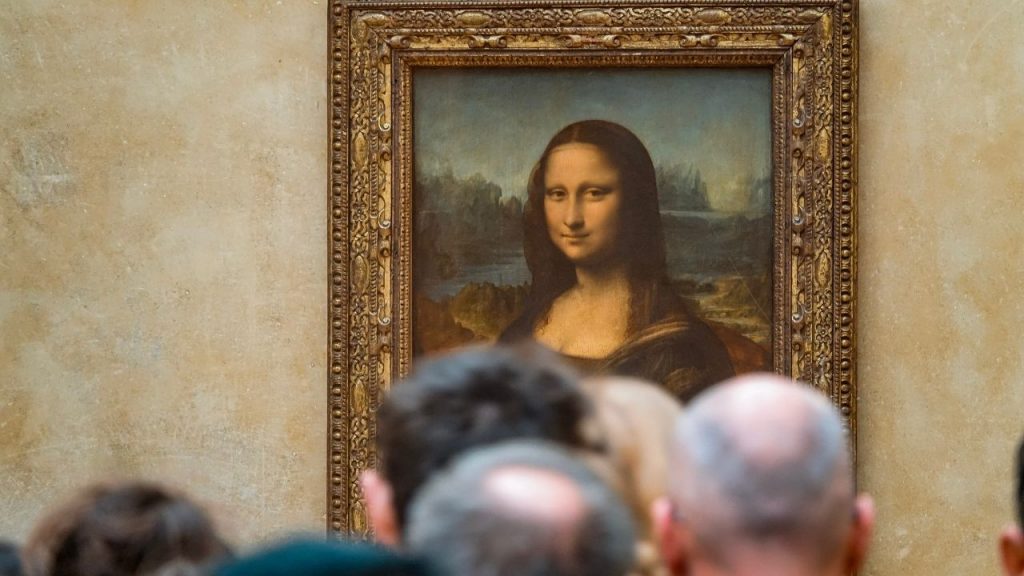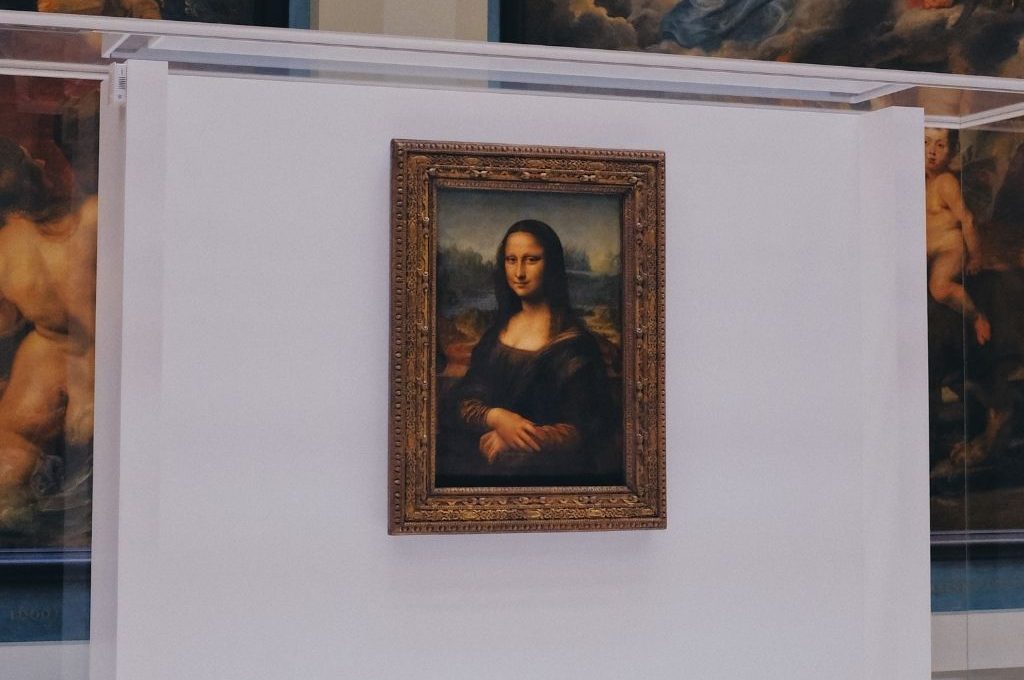Mona Lisa was painted in the early 16th century by the one and only Leonardo da Vinci. He began working on this masterpiece in Florence in 1503 and spent nearly four years perfecting every detail. It’s unclear whether Leonardo finished the painting, but one thing is certain: He never gave it to anyone else. When he died in 1519, Mona Lisa was still in his possession.
It is undoubtedly one of the most famous paintings in the world and has been captivating art lovers or even casual observers for centuries. So, what makes this painting so special, and why is it considered one of the most valuable works of art in history?
🛎️ Reminder: Don’t forget to download Piri Guide mobile app to explore the works of famous artists and the museums or cities that house them! 😊
Where is Mona Lisa?
Mona Lisa is currently in Louvre Museum. The painting is the museum’s most popular exhibit. Millions of visitors gather around Mona Lisa just to catch a glimpse of it each year.
Due to the painting’s popularity, it can be quite difficult to get a close-up look at it. Visitors are often restricted to viewing the painting from a distance, and bulletproof glass protects the painting so that no one could damage or attempt to steal it.
If you plan to visit France and see the famous woman, Mona Lisa, then don’t forget to check out our Paris Travel Guide before setting out!
Why is Mona Lisa so Famous?
Mona Lisa is a Renaissance masterpiece. The painting is famous for its technical brilliance. Here, da Vinci employed a technique known as sfumato. Sfumato technique created a soft, smoky effect that gives the painting depth and realism. It was revolutionary at the time, and da Vinci used this method in his Mona Lisa.
Besides its artistic merit, the painting has cultural significance, too. Mona Lisa has become a Western cultural icon, appearing in countless books, films, and television shows. Similarly, the painting has been the subject of numerous conspiracy theories, adding to its fame and mystique.
The Mystery Behind It

We’ve mentioned the mystery of Mona Lisa. Yet, there is definitely more to learn about this puzzling woman and the museum that houses it. If you happen to visit the Louvre Museum, you can download the digital tour guide and audio content app Piri Guide!
The Piri Guide mobile app offers you the best routes for Paris, detects your location, and automatically starts telling you the story of wherever you are. All you have to do is put on your headphones or earbuds and follow the route. We have talked about many works of art, such as the Girl with a Pearl Earring and The Last Supper.
The Mysterious Smile of Mona Lisa
The smile of the Mona Lisa is perhaps the most famous aspect of the painting. The enigmatic smile has been the subject of much speculation, with numerous theories proposed to explain its meaning.
One theory is that the smile represents a sense of happiness or contentment. According to this theory, the woman in the painting is smiling because she is content with her life and her place in the world.
Another theory is that the smile represents a sense of melancholy or sadness. In the sense of this theory, the woman in the painting is smiling to hide her inner emotions and to put on a brave face in the face of adversity.
Who is Mona Lisa?
One of the biggest mysteries surrounding the Mona Lisa is the identity of the sitter. The woman in the painting is believed to be Lisa Gherardini, the wife of a wealthy Florentine merchant. However, there is no conclusive evidence to support this theory.
Sfumato Technique
Sfumato is an Italian term that means “smoky” or “foggy,” and it refers to a painting technique that creates a subtle transition between colours and tones, giving the painting a soft, blurry, and almost ethereal quality.
Leonardo da Vinci was a master of the sfumato technique, and he used it extensively in the painting of Mona Lisa’s face. He achieved the effect by applying multiple layers of very thin paint, gradually building up the tones and creating a gradual transition between light and shadow.
By using the sfumato technique, Leonardo was able to create a sense of depth and three-dimensionality in Mona Lisa’s face. Eventually, it gave her a lifelike appearance. The subtle gradations of light and shadow also contribute to the painting’s famously enigmatic smile. These gradations allow the viewer’s eye to perceive different emotions and expressions depending on the viewing angle and lighting conditions.
To discover more, we are waiting for you on the Piri Guide app! 😊




